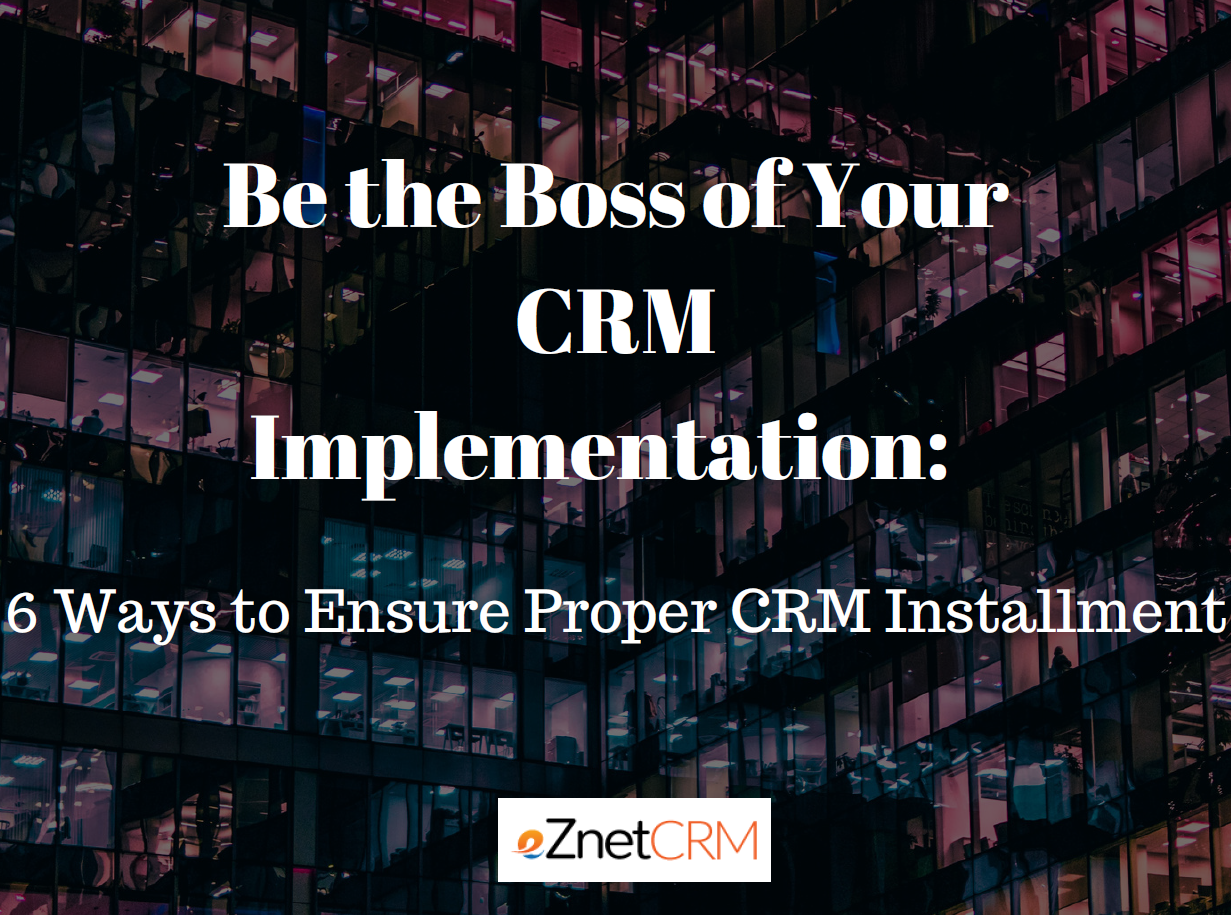There is nothing I love more than a company I love loving me back. That is, acknowledging me as a loyal customer. Let’s face it, they depend on customers like me to stay in business I depend on them for products I love. This is what we call symbiotic relationship. Don’t you want that with your customers?
We expect to be taken care of and because service and product providers know this, Customer Relationship Management (CRM) has become an innovator in connecting brands to their customers.
When CRM implantation goes accordingly, you all of a sudden have quality interface with your customer as well as a 360-degree view of your company in the palm of your hand. However, what happens when CRM implementation is failed?
Implementing any enterprise application is a risky proposition unless armed with a well-placed strategy, and CRM is no different. In the midst of all the success stories of CRM, failed adoptions have also been reported, giving many businesses a lackluster impression of CRM.
Why is it that some companies are able to implement CRM successfully, while others fail to do so? There must be something that these organizations do correctly which others fail to apprehend.
Here are 6 tips on how to ensure proper CRM installation:
1. Have a well-defined vision.
What do you wish to accomplish with a CRM? What do you want to see? Want to be able to do? What issues are you trying to resolve? Do you have any preconceived expectations? These are questions you need to ask yourself before adding to your company’s technology. Your CRM provider should be able to answer and succeed in your objectives as well as make them well defined and quantifiable.
Without a well-defined vision in place you can’t have a strong strategy and the entire purpose gets defeated. Your end goals should already be in mind before you start on the project.
2. Select the right software for your organization and team.
Many organizations buying a CRM software look for attractive additional features or trimmings. It is during implementation that they realize that these additional offerings have no real value and that this is not what they actually require.
Always select a CRM system relevant to your business. Yes, bells and whistles are nice but do you need any new bells or whistles?
Look for features and functionalities that work for your business. This includes your employees. Is the software something they can navigate easily? Find out from your team what is it that would assist them most in their job. For example, if your team requires data on-the-go, select a CRM software which is accessible on mobile devices.
The questions you need to ask yourself before deciding on a software are: What are the features you want? Is it customizable and flexible? Is it scalable? Would it seamlessly integrate with your existing tools?
3. Take your entire team on board.
The purpose of CRM is for the people it aids, not the technology itself. The utility of a CRM software is indisputable, but your members need to work on the data to improve your customer’s experience. And, for this to happen user adoption is a necessity.
Adapting to change is a difficult task for employers to ask of their employees. Convincing your team to stop using their favorite tools overnight and start working on a CRM system is a challenging ask.
Make them aware that a CRM software not something reserved for managers and bosses. It is a universal tool for all employees and all customers. It is not an exclusive system that won’t show them any benefits.
You have to inspire and motivate your team that a successful implementation of a CRM system would make their professional life easy and help individuals achieve their targets efficiently.
4. Assure your team that they would get adequate training and time during transition.
As an employer you know that all employees require training. It benefits them, your customer, and your company altogether. Avoid CRM failure by providing sufficient training for CRM use.
It is unfair to expect your team to be productive right away on a new system without giving them proper training. Ask your vendor to provide training support to your team.
5. Implement your CRM software in phases.
As with most things in life, rushing through something can be cause for mishaps. Never rush through the implementation process. Implement it in a phased manner. Too much too soon will jeopardize the success of the project and would add to the already existing confusion.
To make your project manageable divide it into phases. Start the project on a pilot basis with your top executives and let them become comfortable on the system before selecting a new batch. It is always better if the software makes its way from the top to bottom with team members explaining the benefit to their colleagues.
6. Double check you have entered your data correctly.
Your CRM will only function as accurately as the data you put in it. Slow adopters in your team may try and input data from alternative sources, which means they may inaccurately enter it in the system. This also goes for those who received poor training.
Moreover, a new software needs migration of data from your old system. Select a CRM that seamlessly integrates with your existing systems so you can avoid missing, irrelevant, or inaccurate data sneaking into your new CRM system.
7. Find a vendor who help you out with data migration.
If you are planning to buy a new CRM software for your company and you want to avoid these mistakes you should think of eZnetCRM. We are a company that utilizes our own product because we trust it. With 24/7 vendor support and expert training, eZnetCRM would also help you integrate all your data so that you are able to successfully implement your most valued project.
→', 'twentytwelve' ) ); ?>





